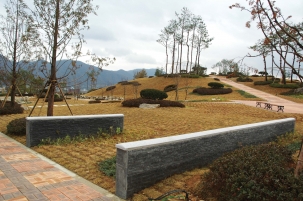조경가와 건축가, 무엇이 다를까?
미국조경가협회의 ‘조경 미디어 가이드라인’지난 2월 5일자 동아일보의 '한국현대건축 대표 20선' 보도이후, 선정대상과 크래딧을 두고 논란이 확산되고 있다. 그러한 가운데, 지난해 11월 26일 미국조경가협회(ASLA)가 공개한 'MEDIA ADVISORY: A GUIDE TO LANDSCAPE ARCHITECTURE'가 새롭게 이목을 끈다.
게시 내용은 제목이 언급하는바와 같이 '조경'과 '조경가'의 역할을 소개하는 '안내문' 성격을 띠고 있다.
ASLA는 "기자(언론)에게 조경의 전문성과 공공성을 명확히 이해시키기 위해서"라고 이 글의 게시목적을 서두에서 밝혔다.
구성은 크게 '조경에 대한 잘못된 설명'과 '인접 전문분야'로 나누어 놓았다.
전자에 대해 ASLA는 조경가의 전문성을 강조하고 있다. 먼저 Landscape Achitecture(조경)은 1863년 옴스테드와 보가 뉴욕의 센트럴파크를 설계하면서 확립된 용어라며, 그 정체성을 짚어주었다.
그러나 단어선택에서 'Landscape Architect'와 'Landscape Designer'는 차이를 두어야 한다고 전했다. 오늘날 Landscape Architect(조경가)는 미국의 모든 주(州)에서 면허를 발급하며, 명확하게 보호받는 개념이지만, Landscape Designer(조경디자이너)는 면허가 필요하지 않다는 것이다.
조경가가 하는 일에 대해선 "의류 제조업자가 만든 옷감을 가지고 형태를 디자인하는 '패션디자이너', 다른 회사에 의해 프린트된 벽보를 감각적으로 디자인하는 '사람'을 떠올리면 된다."는 비유를 들어 설명했다.
특히 ASLA는 "조경가와 건축가라는 용어는 교체해서 사용할 수 없다."고 강조한다. 두 전문직은 많은 프로젝트를 함께 진행하지만, 다른 훈련과 교육과정을 거치고 면허를 취득하기 때문에 두 개는 전문직으로 분리되어 운영된다는 설명이다.
즉, 건축가가 주로 특정용도의 빌딩(건축물)과 구조물, 즉 집과 사무실, 공공건물과 학교 등을 설계한다면, 조경가는 주로 야외 환경과 녹색 기반시설(Green Infrastructure)를 설계한다는 것이다.
여기서 녹색 기반시설이란 프라자, 캠퍼스, 공원, 놀이터, 가로경관 등을 지칭한다.
두 직업의 차이를 쉽게 이해시키기 위해 ASLA는 "건축가가 대개 수직적 공간을 만드는 일을 한다면 조경가는 수평적 공간을 만드는 일를 수행한다는 점을 기억하면 된다"고 풀어 설명했다.

한편 ASLA는 조경과 조경가의 역할을 명확히 보여주기 위해 인접 전문분야의 업무도 함께 소개하였다.
예를들어, 토목기술자는 "주로 생활에 필요한 hard infrastructure 시스템과 관련해 일을 한다."고 밝혔고, 도시계획가는 "물리적 토지이용의 개발계획을 수립한다."고 설명했다. 현재 미국의 도시계획가에게 2가지 종류의 면허가 발급되지만 AICP(American Institute of Certified Planners)에서 인증하는 것이 보편적으로 통용되고 있다는 설명도 있었다.
한편 ASLA의 이러한 활동은 미국의 한 언론매체의 보도에도 영향을 미쳤다. 미국 'the Atlantic Cities'는 1월 31일자 뉴스(Defending Youngstown: One City's Struggle to Shrink and Flourish)에서 옴스테드를 '저명한 건축가(Famed Architect)라고 표기해 보도했다. 이후 한 독자가 ASLA의 가이드라인을 근거로 옴스테드는 건축가가 아니라 저명한 조경가(Famed Landscape Architect)로 표기해야 한다고 편집자에게 전하였고, 해당 언론은 이에 대한 정정보도를 하게 된 것이다.
미국조경가협회는 이외에도 대중에게 조경의 개념과 조경가의 역할을 쉽게 알리기 위해 쉬운용어의 브로슈어 제작, 야외 설계활동, 지역 커뮤니티 교육 등의 활동을 확대해 나가고 있다.
MEDIA ADVISORY: A GUIDE TO LANDSCAPE ARCHITECTURE
How to properly represent the landscape architecture profession in the broader context of the design/build community.
The American Society of Landscape Architects offers this advisory to journalists to help them better understand the landscape architecture profession and accurately represent it to the public. Here are some guidelines.
How to Avoid Incorrect Descriptors
The term “landscape architecture” became common after 1863 when Frederick Law Olmsted and Calvert Vaux designed New York's Central Park.
Today, “landscape architect” is a specific title protected in all 50 states based on licensure; “landscape designer” does not require licensure. They are not interchangeable. Becoming licensed generally requires holding a professional degree, completing a period of supervised practice and passing the national licensing examination.
“Landscaper” and “landscape contractor” are related but different professions. Landscape architects are licensed professionals who often work with landscaping or other construction companies to install those designs. Think of the fashion designer imagining an outfit while a clothing manufacturer makes the apparel, or an artist designing a wall poster that's printed by another company.
Also, do not use the terms “landscape architect” and “architect” interchangeably. While the two professions collaborate on many projects, both are separate professions that require years of rigorous and distinct training, education, and licensure. Architects primarily design buildings and structures with specific uses, such as homes, offices, public buildings and schools. Landscape architects primarily design outdoor environments and related green infrastructure, such as plazas, campuses, parks, playgrounds, streetscapes and residential properties. An easy way to remember the difference is architects generally work vertically while landscape architects work horizontally.
Related Professions
Along with architects and landscapers, landscape architects also work with other distinct professions:
Civil engineers are primarily concerned with hard infrastructure systems to manage practical needs; landscape architects often collaborate on projects with engineers. Like landscape architects, engineers must meet educational, experience and testing requirements prior to licensure.
Planners plan the development of physical land use, such as master plans, communities, transportation plans and historic/conservation areas. They also develop and shape land use policies at all levels. There are two states that license planners, but the most common credential is administered by the American Institute of Certified Planners.
Land developers may or may not be involved on a team, depending on the type of project. They typically manage the overall development of the built site, such as financial, real estate, coordinating architectural/landscape contracts, permit oversight and community/city coordination.
출처:www.ASLA.org
- 글 _ 나창호 기자 · 라펜트
-
다른기사 보기
ch_19@hanmail.net
























